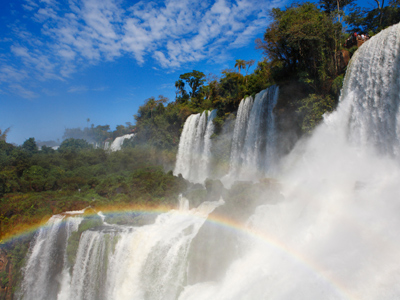
River Landscapes 02
This is our second KS3 Geography quiz on river landscapes. Small rivers may also be called by other names, including stream, creek, brook, rivulet, tributary and rill. Some are specific to geographic location, e.g. 'burn' in Scotland and north-east England. As these smaller water courses flow towards the sea, they may merge together, forming a larger river. The area in which water drains into a particular river is called a river basin. You may have heard of places like the Amazon basin, that is the whole of the area that supplies water that goes into the river Amazon.
In the early stages of a river, the bed is steep and the flow is fast. This means that large rocks can be transported. They are smashed into smaller and smaller pieces. Lower down the river, where the land is a lot flatter, the flow is slower and only the smallest particles called silt can be carried along. At the mouth of the river, where it meets the sea or flows into a lake, the silt is deposited as the river flow is slowed down even more. This can build up over a long period of time to form a delta.
Ready for more?
not all...
quizzers. Try to win a coveted spot on our Hall of Fame Page.







